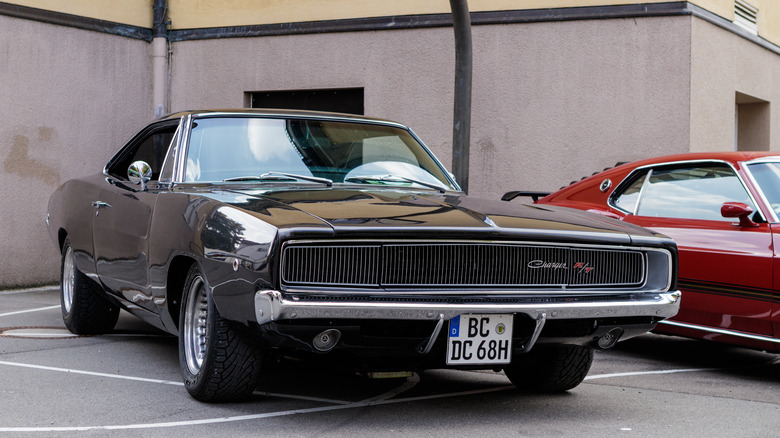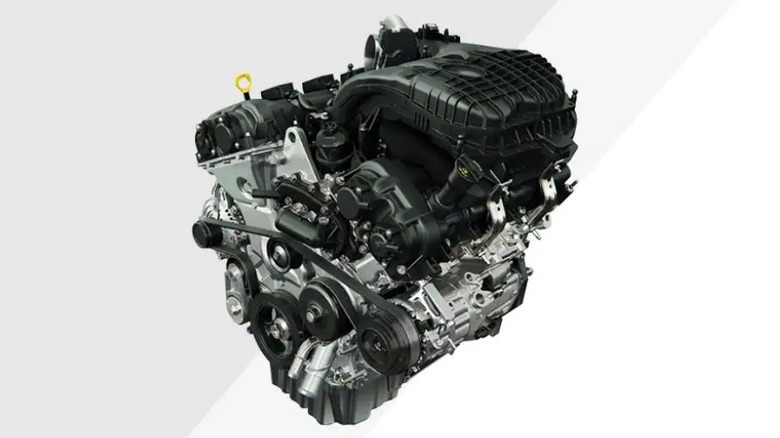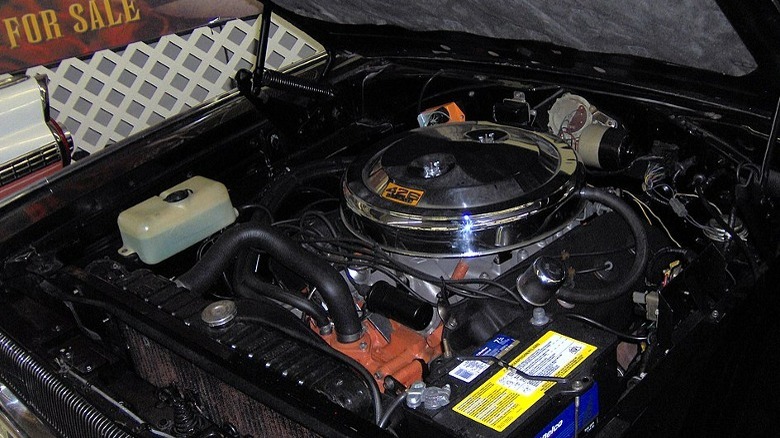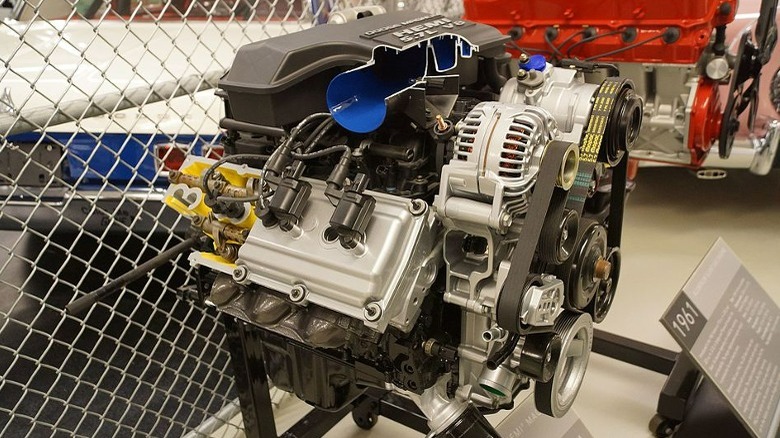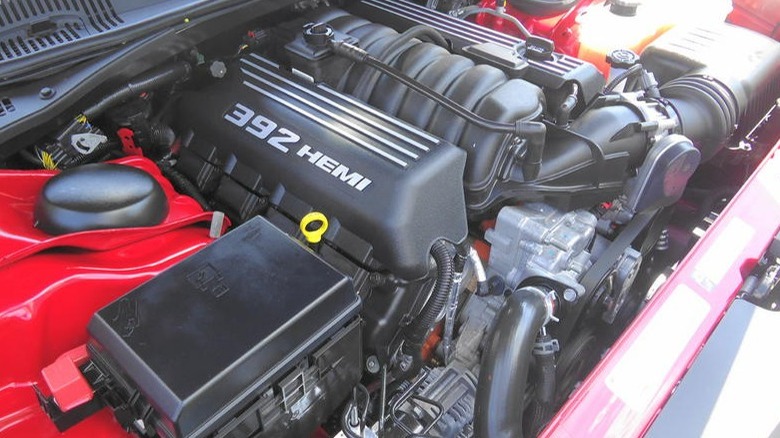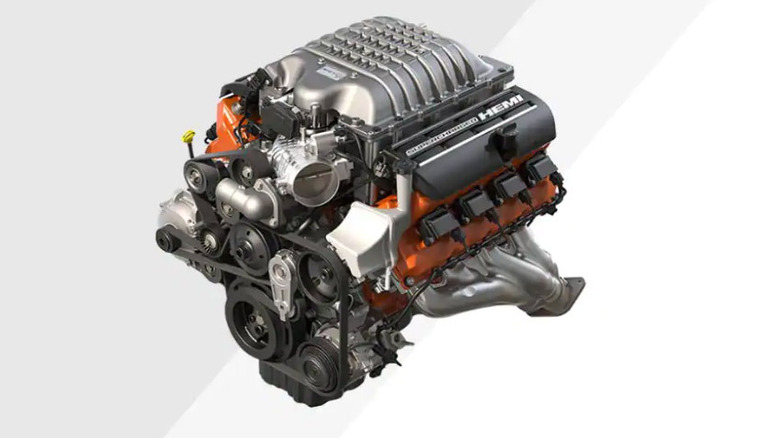5 Of The Best Engines Ever Put In A Dodge Charger, Ranked
The Dodge Charger is a truly iconic automobile. Launched in 1966 and subsequently adapted through seven generations of the model, the Charger is set to phase out in 2024 (along with the Challenger). The legendary racer has seen it all on the road and track. While new Chargers may be going by the wayside in lieu of new EV models and a focus more broadly on maintaining traction in a quickly electrifying marketplace in general, this doesn't mean that we can't marvel at some of the most impressive engines that have found their way under the hood of a Dodge Charger.
Throughout the generations of drivers and their Chargers, some wildly imaginative and ludicrously high output engines have underpinned the muscular acceleration and thrilling sound that is so interconnected with the Charger moniker. While the list could go on almost indefinitely, these are some of the best engines that have powered Dodge Chargers, past and present.
3.6L Pentastar V6
The Pentastar engine is a fantastic baseline option for everyday Charger drivers. The 3.6L V6 produces 292 horsepower and 260 lb.-ft. of torque. And, with the SXT AWD and GT Charger builds the engine is tweaked to provide 300 horsepower and 264 lb.-ft. of torque. The Pentastar engine is a reliable powerplant that replaced the exceedingly dull and much-maligned SOHC V6 engine in 2010. Since then, this V6 has offered drivers a steady workhorse that packs a surprising amount of power in a V6 footprint.
This engine is admittedly diminutive in stature compared to some of the others listed here. Yet the Pentastar V6 offers drivers who aren't looking for maximum output (and substantial prices) but rather want a reliable engine that can provide ample power for a fun ride on the highway, and safety when merging or overtaking, all while offering the classic rumble when the gas pedal is engaged.
The 426 HEMI V8
One of the most iconic partners to the Charger, the 426 HEMI is a V8 example that's perfectly tuned for power and speed. The engine was the first choice among Charger buyers from 1966, when the car debuted, until 1971 (before being discontinued in 1972). This engine produced 425 brake horsepower and 489 lb.-ft. of torque, adding up to a nearly peerless driving experience on both the road and track.
In fact, the 426 was the engine of choice for NASCAR Dodge Chargers and Daytonas during the 1960s and '70s, proving its merit as a classic racing choice that resonates even today. The engine was also leaned on to build a Charger Daytona model that holds the honor of being the first production vehicle to crack the 200-mile-per-hour barrier.
This engine came up with the Charger and is intimately linked with its history. Add to this the fact that the 426 is a workhorse of an engine in its own right and you've got a serious contender for one of the best engines ever placed in a Dodge Charger.
[Featured image by sfoskett via Wikimedia Commons | Cropped and scaled | CC BY-SA 3.0]
5.7L V8 HEMI
The 5.7L HEMI V8 engine isn't as big and menacing as some of the largest engines that have made their way into a Charger. However, this substantial powerplant remains a sturdy option for delivering massive horsepower and speed to the vehicle. It also played an integral role in the revamp of the Charger namesake in 2006. This places it in special company among some of the most iconic Charger engines, regardless of the power figures or other metrics. Still, it helps that the 5.7L model indeed offers massive power and has shown its reliability time and time again. For one thing, this HEMI engine has been the go-to power option for many new police cars patrolling American streets.
The V8 HEMI is found in the R/T Charger builds and offers 370 horsepower alongside 395 lb.-ft. of torque. This is more than enough to build serious speed when the moment calls for it, and the engine allows a Charger to clock a 0-60 time in just 5.2 seconds.
[Featured image by Greg Gjerdingen via Wikimedia Commons | Cropped and scaled | CC BY 2.0]
392 HEMI, 6.4L V8
The 392 is a 6.4L, naturally aspirated V8 engine that produces 485 horsepower and 475 lb.-ft. of torque. The engine entered the fray as a Charger powerplant in 2010 and remains an option on R/T Scat Pack Charger models. These engines pack a serious punch and offer drivers who are keen on their automotive history a subtle nod to vintage HEMI engines that came before it. The original HEMIs were 392's (as in 392 cubic inches), making this powerful and immensely fast engine both a high-performance option for any rebuild, update, or new Charger order and a piece of engine history at the same time.
This is a firmly capable engine that offers power and speed as a standard. It fits right at home in a Charger, surging ahead to clock a 0-60 time that comes in just under the 4.5-second mark. This engine is a clean and classic example of performance power production and makes for an excellent finishing touch to any Charger.
[Featured image by Ammar shaker via Wikimedia Commons | Cropped and scaled | CC BY-SA 3.0]
Supercharged 6.7L HEMI SRT Hellcat V8
The Hellcat V8 engine has to be the best ever lowered into the chassis of a Charger. The 6.7L Supercharged HEMI engine produced 707 horsepower and 650 lb.-ft. of torque. The Charger powered ahead by one of these beastly engines could achieve a 0-60 time in 3.6 seconds and a top speed of 204 miles per hour, firmly cracking the mythical 200 mph barrier with confidence. The 2023 Dodge Charger SRT Hellcat even offers more amperage under the hood in certain trims, with the Jailbreak package bringing the total power output to 807 horsepower and the Redeye model offering 797 horsepower.
The massive performance metrics that this engine brings to the table are virtually unparalleled. The engine is a goliath to be sure and offers some of the best power performance on the market for a serious speed chaser who loves all things Charger. The Hellcat entered the Charger vernacular with the 2015 Charger and has remained a hugely influential powerplant ever since. This is one for the history books and deserves top billing among high-performance Charger engines.
